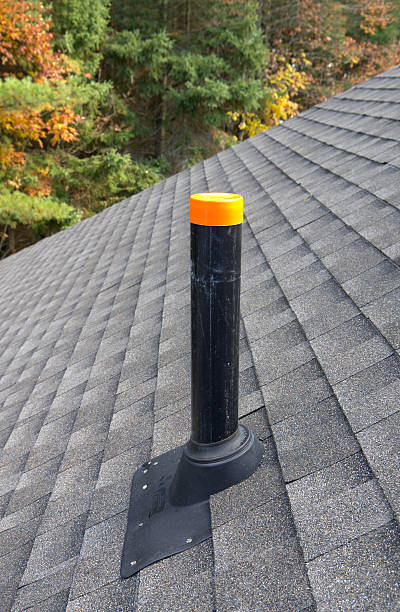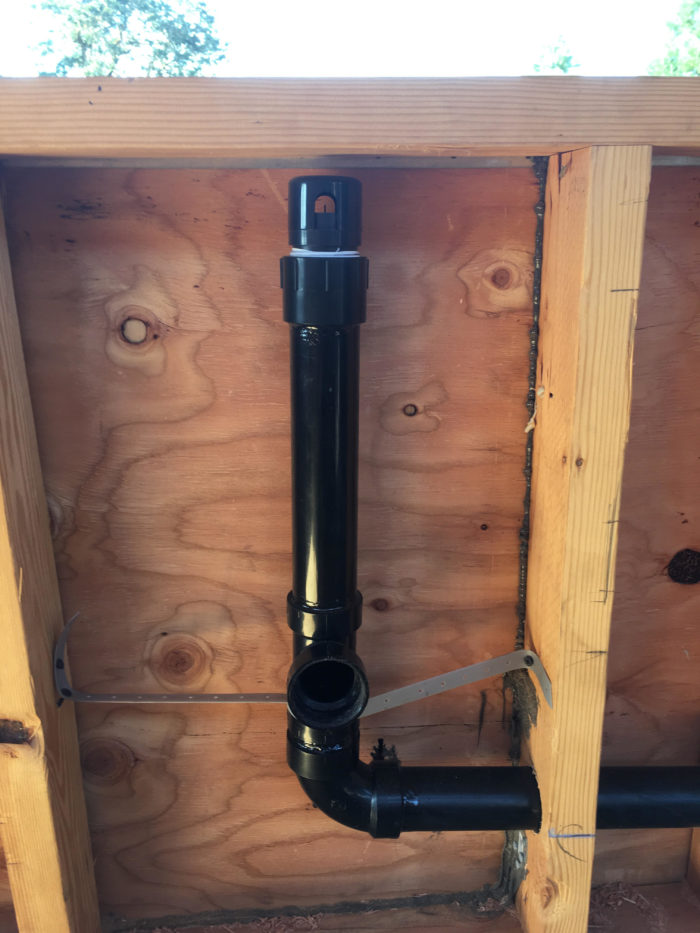The Way Adequate Ventilation Protects Your Plumbing System
The Way Adequate Ventilation Protects Your Plumbing System
Blog Article
The content further down pertaining to Essential Plumbing Vent Pipes: Understanding Their Role is truly insightful. You should look it over.

Proper air flow in pipes systems is often forgotten, yet it is vital for maintaining the capability and safety of your home's plumbing. Air flow helps control air pressure, prevent the buildup of harmful gases, and make sure the efficient removal of waste. In this overview, we will certainly discover the value of proper pipes air flow, just how it functions, and the benefits it brings to your pipes system.
Just How Ventilation Works in Pipes Systems
Atmospheric Pressure Regulation
Proper ventilation preserves well balanced air pressure within the pipes system. When water moves with pipes, it displaces air. Without ample ventilation, this displacement can develop unfavorable stress, leading to reduce drains pipes or siphoning of water from traps, which can create undesirable odors to leak right into the home.
Stopping Sewer Gas Build-up
Among one of the most vital features of pipes vents is to avoid drain gases, such as methane and hydrogen sulfide, from gathering within the home. These gases can present significant health dangers and are very flammable. Vent pipes permit these gases to run away safely outdoors.
Helping in Waste Elimination
Ventilation aids in the reliable elimination of wastewater by preventing airlocks in the drainage system. When air can flow openly through the vents, it enables water and waste to flow efficiently via the pipelines, decreasing the risk of clogs and backups.
Advantages of Correct Air Flow
Enhanced System Efficiency
Effectively ventilated pipes systems operate a lot more successfully, with fewer obstructions, faster draining, and much less pressure on the pipelines. This performance extends the lifespan of the plumbing system.
Improved Air High Quality
By avoiding drain gases from entering your home, proper air flow adds to far better indoor air high quality, making your living atmosphere healthier and extra comfortable.
Avoiding Water Damage
Appropriate air flow aids prevent water from being siphoned out of traps, which can bring about sewer gases getting in the home and causing water damage in time.
Steps to Make Certain Proper Ventilation
Consulting Plumbing Codes
Always speak with regional plumbing codes when designing or modifying your pipes system. These codes supply the essential guidelines for proper airing vent and ensure your system fulfills security criteria.
Normal Evaluation and Maintenance
Routine assessments can help determine possible air flow concerns prior to they become major problems. Maintenance tasks, such as cleaning air vent pipelines and checking for obstructions, are crucial for maintaining the system in good working order.
Expert Installment
For new installations or major adjustments, it's wise to employ an expert plumbing professional. They have the know-how to guarantee the air flow system is correctly designed and set up according to code.
Comprehending Air Flow in Plumbing
Ventilation in pipes describes the network of pipelines that enable air to move through the water drainage system. These vents serve numerous functions, consisting of regulating air pressure within the pipelines, avoiding drain gases from entering the home, and helping in the smooth circulation of wastewater.
Kinds Of Pipes Vents
Main Stack Vent
The primary pile air vent, likewise called the air vent pile, is the primary vent in a plumbing system. It extends from the major drain line up through the roofing, enabling gases to get away and fresh air to go into the system.
Branch Vent
Branch vents connect to the main pile air vent and serve individual components, such as sinks, bathrooms, and showers. These vents make certain that each fixture has appropriate air flow to operate properly.
Air Admittance Shutoff (AAV).
An Air Admission Shutoff (AAV) is a one-way shutoff that enables air to get in the pipes system without the demand for a traditional vent pipe extending via the roofing. AAVs are typically used in renovations or locations where installing a basic vent is unwise.
Indicators of Poor Ventilation in Pipes.
Slow Draining Fixtures.
If your sinks, bathtubs, or toilets are draining pipes slowly, maybe an indicator of poor ventilation. Insufficient air flow can develop a vacuum effect, making it hard for water to drain pipes properly.
Gurgling Sounds.
Gurgling sounds originating from drains pipes are usually an outcome of air being sucked with water traps due to adverse pressure in the pipelines. This is a clear sign of not enough ventilation.
Undesirable Odors.
Sewer odors inside your home are a warning that your pipes system is not correctly ventilated. This could suggest that sewer gases are not being properly vented outside, resulting in possibly unsafe problems.
Common Ventilation Mistakes.
Inadequate Vent Sizing.
Using undersized air vent pipelines can bring about poor air flow and pressure discrepancies in the system. It's vital to make use of vents that fulfill the specific requirements of your plumbing system.
Improper Vent Positioning.
Putting vents as well far from the components they offer can reduce their efficiency. Appropriate placement makes sure that air can flow freely and successfully with the system.
Ignoring Code Needs.
Building codes provide certain standards for pipes air flow. Neglecting these codes can lead to a system that falls short to operate appropriately and might cause expensive repair services or health hazards.
Conclusion.
Appropriate ventilation is a vital element of any type of pipes system, making certain that it works successfully and securely. By comprehending the importance of air flow, identifying the indicators of inadequate air flow, and taking steps to keep your system, you can avoid costly issues and safeguard your home's air top quality.
What is a Plumbing Vent and it's used for?All plumbing systems in residential and commercials construction have a plumbing vent. It doesn’t just vent unwanted odors from the drainage system to the outside; it actually serves an important purpose by supplying air to the system.
The plumbing drainage system is actually called a drainage, waste and vent (DWV) system. When water flows down the piping, an air supply (vent) is needed to allow the water to flow. Think of the vertical pipe as a drinking straw. If you plug the top end of a straw, liquid won’t drain from it.
The DWV system in your building consists of a series of pipes connected to each fixture; they extend above each fixture, and the system terminates at an open pipe that extends through the roof. This piping allows air into the system and prevents unbalanced pressures in the piping.
?The vent also prevents the system from drawing water out of a trap at the fixture with the characteristic “glug-glug-glug” as the drain gasps for air. Plumbing traps should drain smoothly and never “glug” or gasp for air.
If you have a drain that empties slowly or gurgles as it drains, this may indicate a venting problem. If you flush a toilet and the sink gurgles, there’s definitely a vent problem. It is good idea to have a Plumber check this.
https://www.ameliashomeinspection.com/blog/what-is-a-plumbing-vent-and-its-used-for

I'm certainly very inquisitive about Essential Plumbing Vent Pipes: Understanding Their Role and I'm hoping you liked the entire article. If you liked our blog entry plz consider to share it. Thanks for your time. Revisit us soon.
Visit Page Report this page